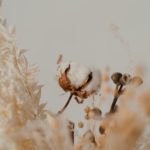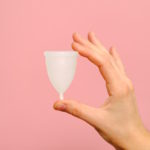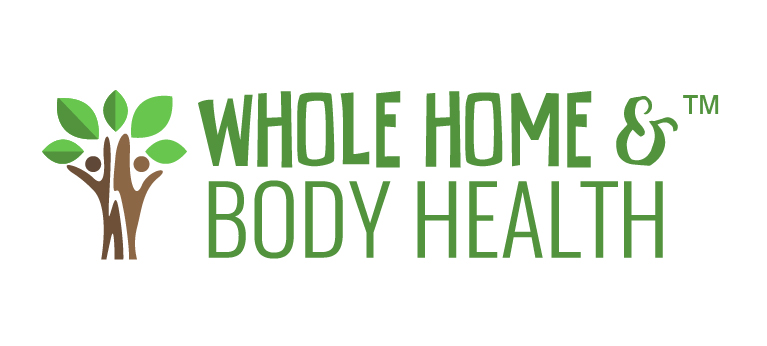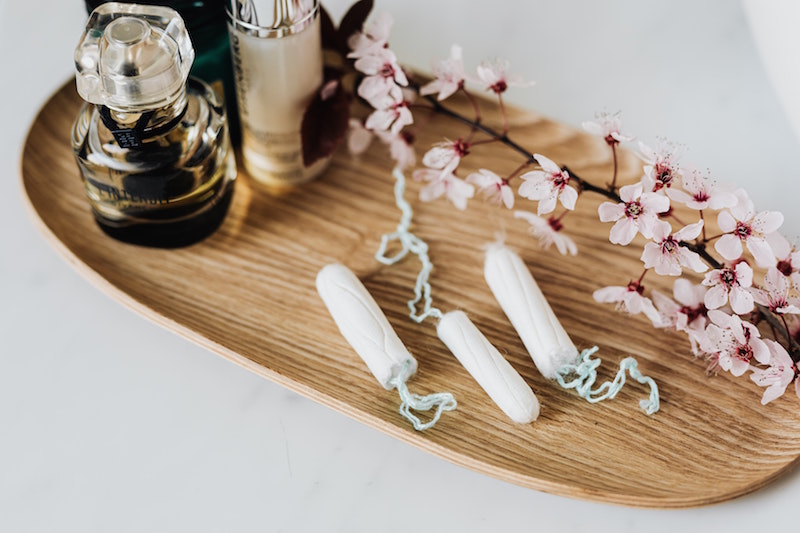What’s in YOUR feminine hygiene products?
If you’re like most women, you don’t give much thought to the brand of feminine hygiene products you use. Most of your decision is based on absorbency needs, physical activity demands, and personal comfort levels. But is there more you should be thinking about? This isn’t a topic of frequent discussion in most circles, but I would argue that it should be! In fact, there is a dirty little secret that the industry doesn’t want you to know about…
This is a topic that is near and dear to my heart. At the age of 33, I was diagnosed with cervical cancer. I underwent several surgeries where my cervix and numerous lymph nodes were removed. This was followed by post-surgery internal bleeding, blood transfusions, septic infections, IV antibiotics, a plethora of pain medications, and other complications. It was a brutal experience, and now I understand why they say ‘once they cut you open, you’re never the same.’ It’s very true. You’re body will never be the same once it’s gone under the knife. There are permanent, uncomfortable changes like scars, adhesions, nerve and skeletal damage, and the lingering effects of antibiotics and pharmaceuticals. Add to that the psychological trauma, the shaming (since this cancer is associated with HPV and sexual activity), the financial strain from loss of work and steep medical bills, constant lab tests, blood tests, and painful pap smears, and years of recovery from such an intrusive procedure. I wouldn’t wish this on anyone.
So I for one, wish someone had had the conversation of ‘good vs. evil’ feminine hygiene products with me a few decades prior. For nearly 15 years I used the popular drug store brands of tampons and pads. I was in my late 20’s before I realized there were better, safer options.
The issue with conventional feminine hygiene products is that they’re made of cotton. This is good because cotton is highly absorptive. The problem however, is that cotton is the most heavily sprayed crop in US agriculture. By ‘sprayed’ I mean sprayed with pesticides, herbicides and fungicides – chemicals that are designed to kill things.

Thankfully, more and more people are becoming aware of the problems with these toxic chemicals. The organic food industry is bigger than ever. As of 2019, it was a 55 billion dollar industry. We know that eating food with these chemicals causes a plethora of health issues and environmental damage, so we choose organic to improve our health and that of the planet. If you want to read more about how these chemicals directly impact our health, check out this article.
In the world of nutrition, I hear this conversation often, and I’m very grateful for that. What I don’t hear people talking about though, is the problem with these chemicals in non-food products. Your skin is the biggest organ in your body. You may think it acts as a barrier to foreign substances, and to some degree it does, but for small molecules like those found in chemicals, it readily absorbs them and allows them into the blood stream. Think about transdermal medications like the birth control patch, nitroglycerine patch, or nicotine patch. These are designed to be applied to skin for immediate absorption into the blood stream. In fact, this form of application can be even more effective that taking a pill. When you consume medication orally, it goes into the stomach and intestines, where it passed through the liver for detoxification. The means you only absorb a small percentage of the product. But when you apply these medications to the skin, they do not go through the liver, but are absorbed directly into the blood stream. So, if you are aren’t willing to eat chemicals on your food, why would you allow them on your body?
When you’re using a cotton sanitary pad, you’re directly exposing your body (the most awesome part of your body!) to an enormous amount of toxic chemicals. To take this a step further, when you use a tampon, you’re putting these chemicals in direct contact with the highly absorbent mucus membranes of the vaginal canal!! Now I’m sure you’re starting to see the big picture here. The vagina is the most sacred part of the human body, shouldn’t we treat it as such? It’s one of the most abundant areas for lactobacillus and other friendly bacteria, important for vaginal health and the health of a baby. So, it makes sense that you should start paying attention to the quality of the body care products you choose. Especially feminine hygiene products.
Do I think my use of conventional pads and tampons contributed to my cervical cancer? It’s impossible to say, but I know with absolute certainty that it didn’t help. I think it probably did contribute, along with other factors. In the years since my surgery, I discovered that I am homogeneous for the PON1 gene. This is a gene that’s responsible for clearing chemicals like pesticides and herbicides from the body. According to my genetic report, I have 0% ability to clear them from my body. So I was clearly absorbing a large amount of toxic chemicals right at the cervix.
Additionally, I was a raw vegan for the two years prior to my symptoms and diagnosis. You might think that would be a good thing, but obviously in my case, it was not. Inevitably, a vegan diet is high in carbohydrates. In order to get enough calories I had to eat loads of fruit and starchy vegetables – foods very high in sugar. During the two years I ate this way, I was constantly challenged with balancing blood sugar. This is obvious to me now, but I didn’t have that knowledge then, and didn’t understand the importance of protein. Cervical cancer (among others) has a propensity to flourish in these high blood-sugar, high insulin situations.
Of course, cancer is an incredibly complicated condition. There are always numerous factors to why someone may develop cancer cells. I’m sure there were more in my situation, but my genetic makeup, my use of chemically-based products I could not clear, combined with my diet and lifestyle, created an ideal situation for cancer growth. Unfortunately my situation isn’t so special. As a nutritionist, almost every person I work with has blood sugar issues. For some strange reason, we don’t learn how to balance our blood sugar in school – this should be taught in the 1st grade! So most of us are walking around with the inflammation and metabolism issues of the blood sugar roller coaster. (If this is new to you, go here to download my free guide on balancing blood sugar.)
Additionally, we’re all exposed to an increasing number of chemicals in our environment, increased stress, EMF’s, and live farther from nature than ever before in history. It’s no wonder there is more chronic illness in the world than every before!
Fortunately, there are a lot of things we can do to improve our health today and for our future. The first and most important thing we can do is to manage stress. Yes I know, easier said than done. If you need help with this, contact me. Sometimes working with a professional can be the motivation you need for success! Secondly, get your blood sugar under control. Don’t forget to download my free guide here. You know you need to exercise. Hopefully you’re eating as organic and locally as possible. And finally, choose body care products that do not contain a ‘chemical shit-storm’. (Excuse the French, but there’s really no other way to phrase it.)

As the organic food market is exploding, the organic body care industry is also growing rapidly thanks to increased consumer awareness. I suggest starting out with organic pads and tampons. You can find these in almost any natural food store. If you want to take it a step further, you can purchase organic and reusable pads online, you make your own, or you can usually find them locally in health food stores. If you prefer tampons, there are plenty of organic brands on the market today. Again- check your local health food store! You can also get them for 25% off using my online dispensary by Wellevate. Just click here to create your own account.
You can also try something like the Diva-Cup. This is a small flexible cup you can insert into the vaginal canal like you would a tampon. It collects the blood loss and after a few hours you pull it out, empty it, wash it, and then reinsert. It’s a bit awkward the first few times but once you get used to it it’s a breeze. With these reusable options you’re not only protecting your own health, but you’re also saving yourself some money as well as being eco-friendly! I call that a win-win-win! It’s worth getting over the initial weirdness you might feel about reusable products. After all, for most of human existence that was the only option we had, and our matriarchs survived!
Like I said above, no one told me about these options when I was younger, and I certainly wish they had. I was using them for a few years before my cancer diagnosis, but I used the conventional forms for way longer. The good news is that you can make better choices starting today, and teach your daughters, nieces, granddaughters, or other women in your life about these options. It all starts with awareness. So the next time you’re at the store buying those beautiful organic vegetables, don’t forget the organic pads and tampons!
Need more help? Give us a call. We always love to hear from you!

Cathy Cooke, BCHN, BBEC Holistic Nutritionist and Building Biologist is the founder of Whole Home and Body Health which provides EMF Assessments, Mold Testing, and Nutrition and Health Consulting located in Boise, Idaho. Cathy is available for consulting via skype and phone, and is also willing to travel as needed for home assessments. Schedule an appointment today!


